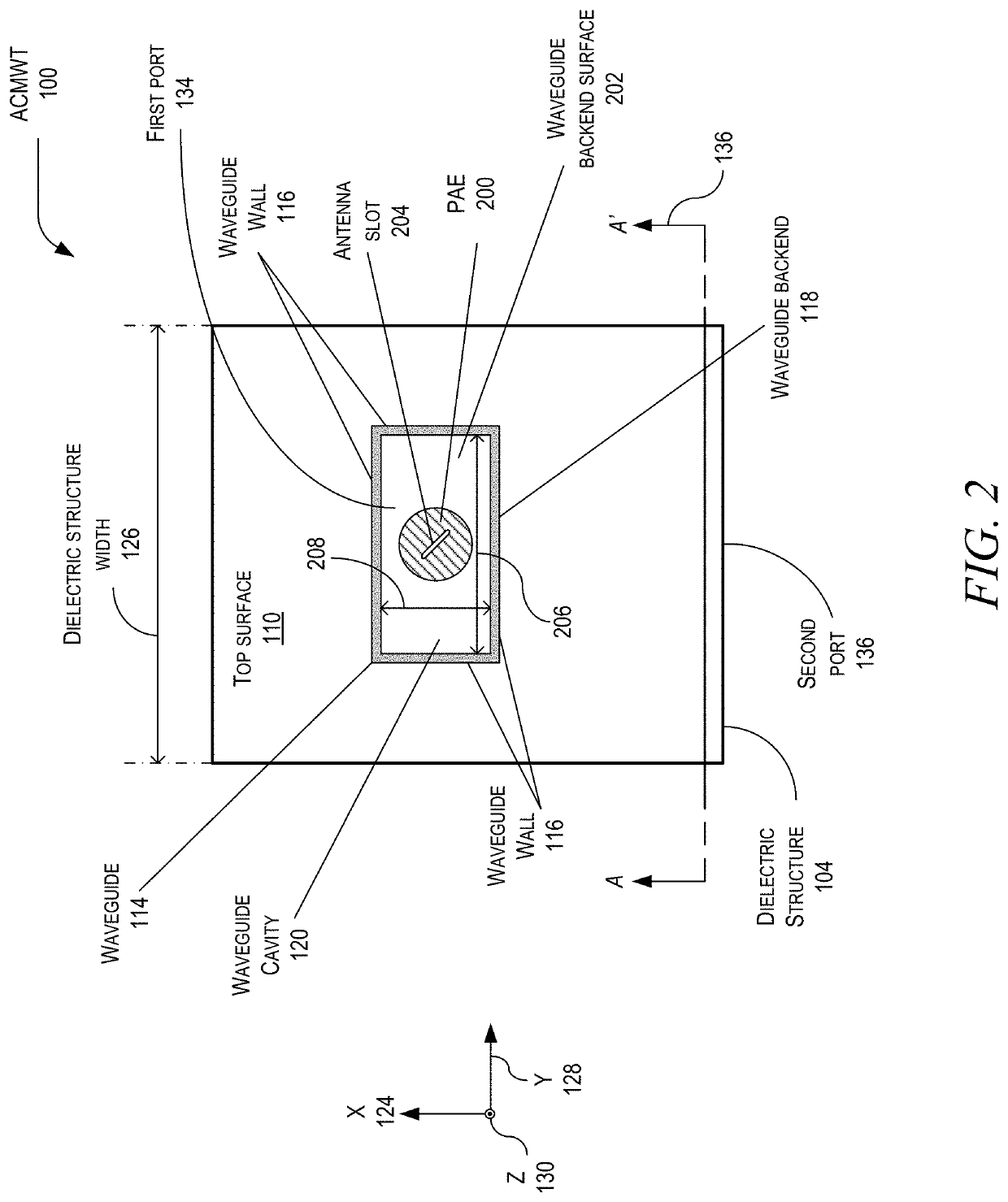Aperture-coupled microstrip-to-waveguide transitions
a technology of waveguides and transitions, applied in waveguides, electrically short antennas, antennas, etc., can solve the problems of waveguide-to-coax adapters not mate well with rf boards, waveguide-to-coax adapters have size, weight, power,
- Summary
- Abstract
- Description
- Claims
- Application Information
AI Technical Summary
Benefits of technology
Problems solved by technology
Method used
Image
Examples
Embodiment Construction
[0047]An aperture coupled microstrip-to-waveguide transition (“ACMWT”) is disclosed. The ACMWT includes a plurality of dielectric layers forming a dielectric structure and an inner conductor formed within the dielectric structure. The plurality of dielectric layers includes a top dielectric layer that has a top surface. The ACMWT further includes a patch antenna element (“PAE”) formed on the top surface, a bottom conductor, an antenna slot within the PAE, a coupling element (“CE”) formed within the dielectric structure between the PAE and inner conductor, and a waveguide. The waveguide includes at least one waveguide wall and a waveguide backend, where the waveguide backend has a waveguide backend surface that is a portion of the top surface of the top dielectric layer and where the waveguide backend surface and the at least one waveguide wall form a waveguide cavity within the waveguide. The PAE is a conductor and is located within the waveguide cavity at the waveguide backend surf...
PUM
| Property | Measurement | Unit |
|---|---|---|
| thickness | aaaaa | aaaaa |
| thickness | aaaaa | aaaaa |
| thickness | aaaaa | aaaaa |
Abstract
Description
Claims
Application Information
 Login to View More
Login to View More - R&D
- Intellectual Property
- Life Sciences
- Materials
- Tech Scout
- Unparalleled Data Quality
- Higher Quality Content
- 60% Fewer Hallucinations
Browse by: Latest US Patents, China's latest patents, Technical Efficacy Thesaurus, Application Domain, Technology Topic, Popular Technical Reports.
© 2025 PatSnap. All rights reserved.Legal|Privacy policy|Modern Slavery Act Transparency Statement|Sitemap|About US| Contact US: help@patsnap.com



